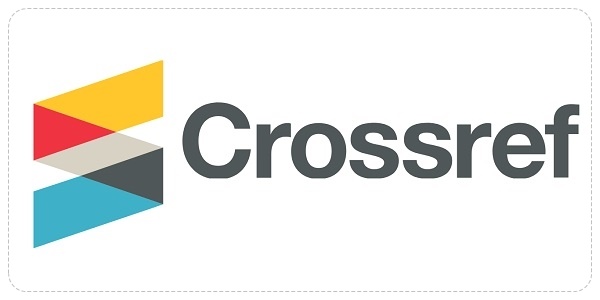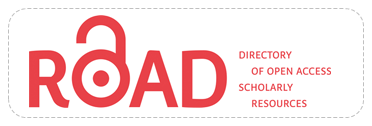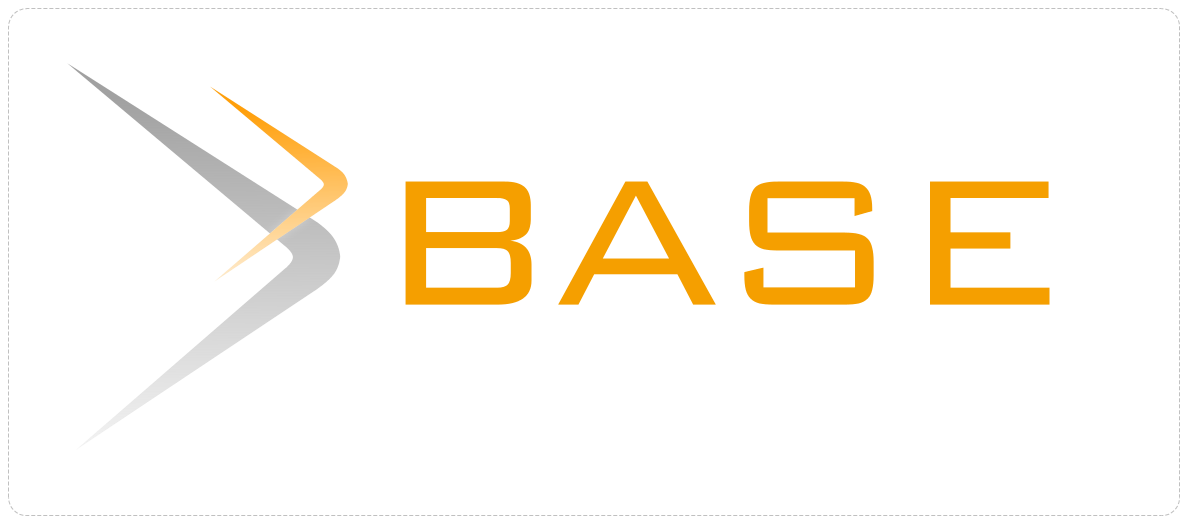Analysis of Visitor Needs for the Development of Educational Applications for the Bandung Geological Museum Collection
Abstract
The main objective of this research is to improve educational applications at the Museum of Geology. The objective is to identify the need to develop educational applications for visitors to the Museum of Geology in Bandung. This research uses the Design-Based Research (DBR) method. The following steps when conducting DBR research are (1) analysis and exploration, (2) design and construction, and (3) evaluation and reflection. The results showed that UI-UX aspects scored 72.78%, interactive elements scored 86.73%, sensitivity to media interactivity scored 73.31%, and enthusiasm for educational application development scored 84.65%. Based on the research results and data collected from this study, interactive media at the Museum of Geology is in good condition, but visitors have some complaints. Then, visitors anticipated additional content from the design, color, and interactivity categories. Since then, interactive media has become more effective in increasing the capacity to provide information about the collection to users. This can be verified using the scores mentioned earlier in the results and explanation section.
Keywords
Full Text:
PDFReferences
Ahmadjonovna, E. T., & Bakhromovich, S. I. (2020). Pedagogical Analysis Of Culturo-Educational Institutions’ Actions In Youth Education (On The Example Of Museum Activities). The American Journal of Social Science and Education Innovations, 2(08), 576-582.
Al Hashimi, S., Al Muwali, A., Zaki, Y., & Mahdi, N. (2019). The effectiveness of social media and multimedia-based pedagogy in enhancing creativity among art, design, and digital media students. International Journal of Emerging Technologies in Learning (iJET), 14(21), 176-190.
Allen, M. W. (2016). Michael Allen's guide to e-learning: Building interactive, fun, and effective learning programs for any company. John Wiley & Sons.
Aryasatya, M. A., & Wibawa, A. (2022). Dampak perkembangan teknologi pada Era Society 5.0 terhadap lapangan pekerjaan. Jurnal Inovasi Teknologi dan Edukasi Teknik (JITET), 2(3), 108-112.
Ayala, I., Cuenca-Amigo, M., & Cuenca, J. (2020). Examining the state of the art of audience development in museums and heritage organisations: a Systematic Literature review. Museum Management and Curatorship, 35(3), 306-327.
Azzahra, P. S., Dewanda, D. P., & Cahyana, C. (2021). Gyseum Ar: Aplikasi Interaktif Museum Geologi Bandung Berbasis Augmented Reality. eProceedings of Applied Science, (Vol. 1, No. 26, pp. 263-278).
Bai, Q., & Nam, B. H. (2022). Where ‘West Meets East’: the cross-cultural discourses regarding the Chinese arts collections at the Metropolitan Museum of Art. Identities, 29(6), 883-902.
Butler, G., Szili, G., & Huang, H. (2022). Cultural heritage tourism development in Panyu District, Guangzhou: community perspectives on pride and preservation, and concerns for the future. Journal of Heritage Tourism, 17(1), 56-73.
Ceisar, M. (2011). Pembelajaran biologi menggunakan inkuiri terbimbing melalui media animasi dan modul ilustratif. In Seminar Nasional VIII Pendidikan Biologi FKIP UNS, (pp 380-383).
Daskalaki, V. V., Voutsa, M. C., Boutsouki, C., & Hatzithomas, L. (2020). Service quality, visitor satisfaction and future behavior in the museum sector. Journal of Tourism, Heritage & Services Marketing (JTHSM), 6(1), 3-8.
Engelbrecht, J., Borba, M. C., Llinares, S., & Kaiser, G. (2020). Will 2020 be remembered as the year in which education was changed?. Zdm, 52, 821-824.
Evelyn, S., & Machdijar, S. (2019). Musium seni digital. Jurnal Sains, Teknologi, Urban, Perancangan, Arsitektur (Stupa), 1(2), 1989-2004.
Evitasari, O., Qodariah, L., & Gunawan, R. (2020). Pemanfaatan fungsi museum sebagai sumber belajar sejarah dalam mengembangkan kemampuan berpikir kritis. Estoria: Journal of Social Science and Humanities, 1(1), 43-56.
Fiaji, N. A., Brata, K. C., & Zulvarina, P. (2021). Aplikasi AR-CA (Augmented Reality Relief Candi Jago) sebagai upaya pendokumentasian digital relief Candi Jago dan pengenalan wisata sejarah di Malang. Jurnal Teknologi Informasi Dan Komunikasi, 8(4), 815-822.
Fricticarani, A., Hayati, A., Ramdani, R., Hoirunisa, I., & Rosdalina, G. M. (2023). Strategi pendidikan untuk sukses di era Teknologi 5.0. Jurnal Inovasi Pendidikan dan Teknologi Informasi (JIPTI), 4(1), 56-68.
Hidayat, A. R., Putri, N. L. P. N. S., Putra, I. G. J. E., & Ardyanti, A. A. A. P. (2020). Pengembangan model sistem informasi multimedia Museum Panca Yadya melalui e-museum berbasis android. Jutisi: Jurnal Ilmiah Teknik Informatika dan Sistem Informasi, 9(2), 63-74.
ICOM. (2007). Definition of a Museum. Retrieved from http://icom.museum/the-vision/museum-definition/
Januszewski, A., & Molenda, M. (Eds.). (2008). Educational technology: A definition with commentary. Routledge.
Khaira, H. (2021). Pemanfaatan aplikasi kinemaster sebagai media pembelajaran berbasis ICT. In Prosiding Seminar Nasional Pembelajaran Bahasa dan Sastra Indonesia (SemNas PBSI)-3 (pp. 39-44).
Knutson, K., Crowley, K., Russell, J. L., & Steiner, M. A. (2020). Approaching art education as an ecology: Exploring the role of museums. In Multidisciplinary Approaches to Art Learning and Creativity (pp. 218-231). Routledge.
Kodrle, S., & Savchenko, A. (2021). Digital educational media in foreign language teaching and learning. In E3S Web of Conferences (Vol. 273, p. 12018). EDP Sciences.
Kotiash, I., Shevchuk, I., Borysonok, M., Matviienko, I., Popov, M., Terekhov, V., & Kuchai, O. (2022). Possibilities of Using Multimedia Technologies in Education. International Journal of Computer Science and Network Security, 22(6), 727-732.
Lonto, A. L., Delly, W. T., & Rorimpandey, W. H. (2021, December). Development of moodle-based interactive multimedia to implement hybrid learning strategies in civic education learning. In International Joined Conference on Social Science (ICSS 2021) (pp. 373-378). Atlantis Press.
Maphosa, V. (2021). Teachers’ perspectives on remote-based teaching and learning in the COVID-19 era: Rethinking technology availability and suitability in Zimbabwe. European Journal of Interactive Multimedia and Education, 2(1), e02105.
Marini, C., & Agostino, D. (2022). Humanized museums? How digital technologies become relational tools. Museum Management and Curatorship, 37(6), 598-615.
Marques Junior, S. E., & Rodrigues, R. P. C. (2022, October). Interface design of a mobile application oriented to packaging sustainability. In International Conference on Design and Digital Communication (pp. 177-190).
McKenney, S., & Reeves, T. C. (2013). Systematic review of design-based research progress: Is a little knowledge a dangerous thing?. Educational researcher, 42(2), 97-100.
Meng, Y., Chu, M. Y., & Chiu, D. K. (2023). The impact of COVID-19 on museums in the digital era: practices and challenges in Hong Kong. Library Hi Tech, 41(1), 130-151.
Miranda, J., Navarrete, C., Noguez, J., Molina-Espinosa, J. M., Ramírez-Montoya, M. S., Navarro-Tuch, S. A., ... & Molina, A. (2021). The core components of education 4.0 in higher education: Three case studies in engineering education. Computers & Electrical Engineering, 93, 107278.
Papadakis, S., Kalogiannakis, M., & Zaranis, N. (2021). Teaching mathematics with mobile devices and the Realistic Mathematical Education (RME) approach in kindergarten. Advances in Mobile Learning Educational Research, 1(1), 5-18.
Pitale, A., & Bhumgara, A. (2019, November). Human computer interaction strategies—designing the user interface. In 2019 International Conference on Smart Systems and Inventive Technology (ICSSIT) (pp. 752-758).
Poernamasari, D. A. C., Purwanto, E., & Pranoto, Y. K. S. (2022). Developing microsoft sway-based interactive media in pigmented facial care to increase motivation and outcomes. Innovative Journal of Curriculum and Educational Technology, 11(1), 38-46.
Quattrini, R., Pierdicca, R., Paolanti, M., Clini, P., Nespeca, R., & Frontoni, E. (2020). Digital interaction with 3D archaeological artefacts: evaluating user’s behaviours at different representation scales. Digital Applications in Archaeology and Cultural Heritage, 18, e00148.
Rahmat, S. T. (2015). Pemanfaatan multimedia interaktif berbasis komputer dalam pembelajaran. Jurnal Pendidikan dan Kebudayaan Missio, 7(2), 196-208.
Ramadhon, S., Emilzoli, M., & Rullyana, G. (2023). Desain kurikulum pelatihan digitalisasi pembelajaran kolaboratif bagi widyaiswara. EDUTECH 22(3), 255-268.
Rusli, N. F. M., Ibrahim, N. F. S. C., Raâ, M., & Nallaluthan, K. (2021). Students' perceptions of interactive multimedia applications in the 21st Century Teaching and learning process. Online journal for tvet practitioners, 6(1), 15-24.
Sauer, J., Sonderegger, A., & Schmutz, S. (2020). Usability, user experience and accessibility: towards an integrative model. Ergonomics, 63(10), 1207-1220.
Shahid, F., Aleem, M., Islam, M. A., Iqbal, M. A., & Yousaf, M. M. (2019). A review of technological tools in teaching and learning computer science. Eurasia Journal of Mathematics, Science and Technology Education, 15(11), em1773.
Smith, C. D. (2018). Transforming user-centered analysis into user interface: the design of new-generation products. In User Interface Design (pp. 275-304). CRC Press.
Stone, D., Jarrett, C., Woodroffe, M., & Minocha, S. (2005). User interface design and evaluation. Elsevier.
Susilana, R., Dewi, L., Rullyana, G., Hadiapurwa, A., & Khaerunnisa, N. (2022). Can microlearning strategy assist students’ online learning. Jurnal Cakrawala Pendidikan, 41(2), 437-451.
Sutcliffe, A. (2022). Designing for user engagment: Aesthetic and attractive user interfaces. Springer Nature.
Usman, Y. D., & Madudili, G. C. (2020). Assessment of the impact of computer assisted instruction on teaching and learning in Nigeria: A theoretical viewpoint. International journal of education and development using information and communication technology, 16(2), 259-271.
Wijaya, E. Y., Sudjimat, D. A., & Nyoto, A. (2016, September). Transformasi pendidikan abad 21 sebagai tuntutan pengembangan sumber daya manusia di era global. In Prosiding Seminar Nasional Pendidikan Matematika (Vol. 1, No. 26, pp. 263-278).
Yang, Q., Scuito, A., Zimmerman, J., Forlizzi, J., & Steinfeld, A. (2018, June). Investigating how experienced UX designers effectively work with machine learning. In Proceedings of the 2018 designing interactive systems conference (pp. 585-596).
Zheng, P., Yu, S., Wang, Y., Zhong, R. Y., & Xu, X. (2017). User-experience based product development for mass personalization: a case study. Procedia CIRP, 63, 2-7.
DOI: https://doi.org/10.17509/pdgia.v21i3.65109
Refbacks
- There are currently no refbacks.
INDEXED BY

This work is licensed under a Creative Commons Attribution-ShareAlike 4.0 International License
















